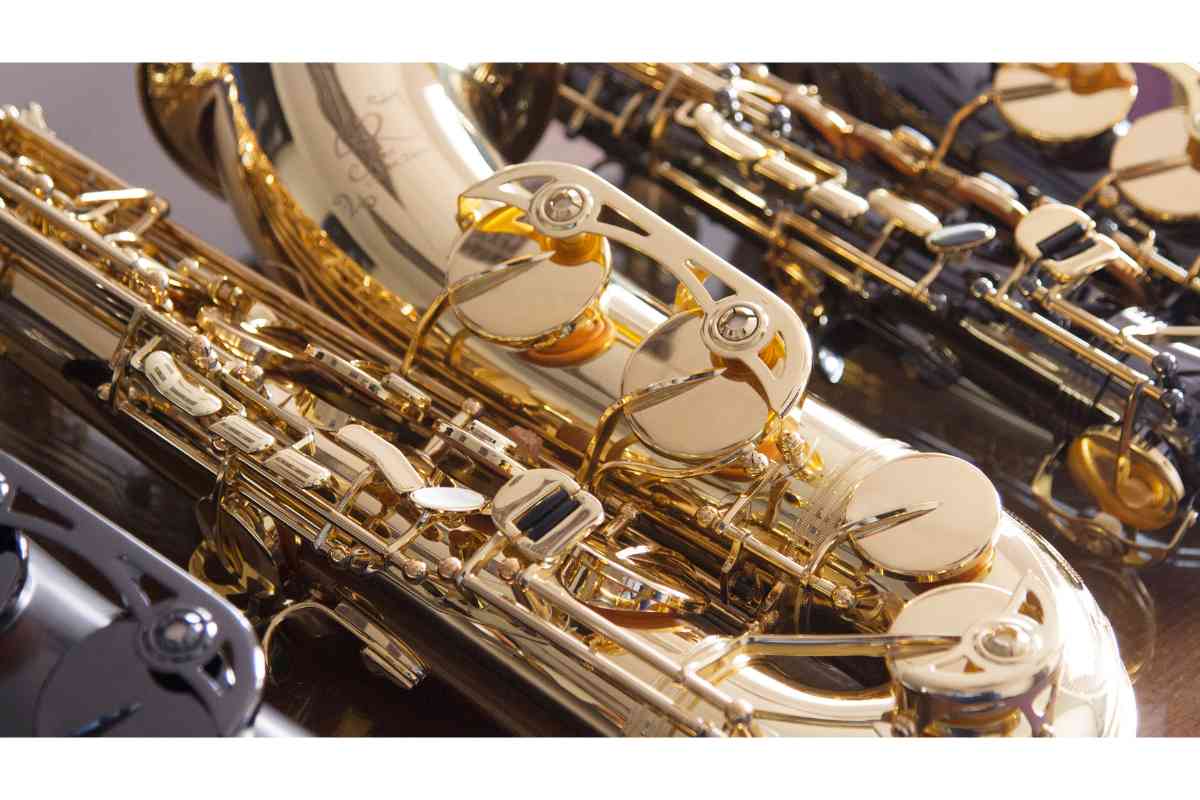One of the best-known and most frequently used instruments in the woodwind family, the saxophone, has been used in almost every musical genre. First invented in the 1840s, it produces a smooth, classy sound.
The weight of a saxophone varies depending on the specific type, but in general, an alto sax will weigh around 4.8lbs (2.2kg) with the mouthpiece attached. On the other hand, the tenor saxophone weighs, on average, 6.6lbs (3kg), and the baritone sax weighs around 11.2lbs (5.11kg).
As you’ve probably guessed from their names, the various types of saxophones are used to produce different pitches and tones. This results in widely varying sizes, dimensions, and weights.
In this article, you’ll learn how much each type of saxophone weighs on average and how the weight affects the way the instruments sound.
Saxophone Weights Explained
In total, there are eight distinct types of saxophones. Each of the different versions has altered pitch ranges, allowing the musician to choose the one that can produce the notes that they prefer.
The four most commonly used saxophones are:
- Soprano
- Alto
- Tenor
- Baritone
The other four saxophones are used for more specialist purposes, mainly in orchestral music rather than contemporary popular genres. Let’s take a look at the average weights of the four most popular varieties.
| Type of Saxophone | Average Weight (lbs) | Average Weight (kg) | Key |
| Soprano | 2 lb 2 oz | 1.01 kg | B♭ |
| Alto | 4 lb 8 oz | 2.2 kg | E♭ |
| Tenor | 6 lb 6 oz | 3.0 kg | B♭ |
| Baritone | 11 lb 2 oz | 5.11 kg | E♭ |
As you can see, the average weight of each type of saxophone varies considerably. The lower the pitch range of the saxophone, the more it weighs because a larger body is required to produce deeper tones.
This is the same reason that a double bass is much larger than an acoustic guitar – it needs the extra resonance for lower notes to be produced and projected from the sound hole.
Many saxophonists begin by learning one of the more lightweight varieties, notably the soprano or alto. As they become more accustomed to playing the instrument, they may then move on to the heavier, lower-sounding saxophones.

Does Saxophone Weight Matter?
The weight of an instrument is something that all musicians must take into consideration, particularly if they play it standing up. Some instruments can cause a lot of fatigue and stress on specific body parts when they are played for lengthy periods.
Saxophones aren’t the heaviest of instruments, and therefore the weight is not massively important. If you feel that you will struggle with the physicality of playing a sax, there are certain things you can use to help, which we’ll discuss shortly.
On the whole, the weight of a saxophone shouldn’t be the main determining factor when you are choosing which one you want to play. The first thing you should consider is the sound that you want to produce.
If you’d like to belt out the high notes, a soprano or alto sax should be your choice. On the other hand, a baritone saxophone is a better option for those who want a thicker, lower sound.
It’s important to consider whether you will be carrying your saxophone often and for long distances, as its weight could become an issue in these cases.
Ways to Improve Saxophone Comfort & Mobility
Some saxophonists may be tasked with playing for several hours per day, whether they’re rehearsing, recording, or performing as part of an ensemble. If this is the case, using an accessory to reduce the physical burden of playing the sax is a good idea.
This could be a:
- Harness
- Sling
- Neck strap
A saxophone harness is worn around both shoulders and clipped around the saxophonist’s back. It supports the weight by distributing it evenly around the body and is great for those who need extra support.
A sling is only worn around the shoulders and will reduce some of the weight of the saxophone without constraining you too much. Finally, a neck strap is only worn around the neck; while it doesn’t reduce much of the weight, it does keep the instrument more stable while you play.
Related Questions
Which saxophone is best for jazz?
Historically, the tenor saxophone is synonymous with jazz. Tuned to B flat, the tenor sax has the ideal range of notes needed for smooth-sounding jazz melodies and riffs, making it a popular choice for this style.
Is tenor sax harder to play than alto?
There is no real difference in the difficulty between playing the tenor and alto saxophones. Both require an equal amount of dedication, consistent practice, and skill.
Which saxophone is hardest to play?
The soprano saxophone is considered by many to be the most difficult variety to play. It produces the highest notes and requires a good musical ear and technical ability to play well.
